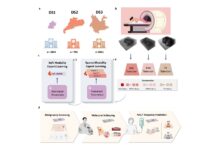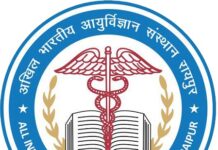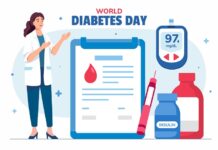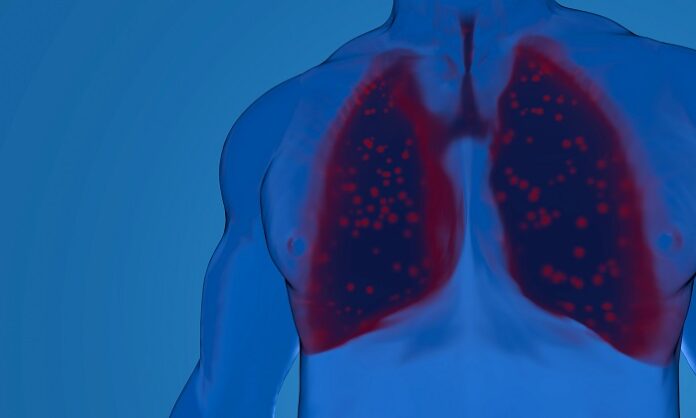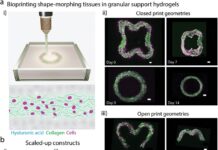There is an urgent need for economical, transportable, and quick TB detection in a low-resource environment like India. Sputum smear microscopy has been used for more than a century as a standard method for identifying mycobacterium tuberculosis (M.tb). Results from M.tb cultivation take three to six weeks. This may take significantly longer for tests of medication susceptibility. This results in a protracted delay in diagnosis, which in turn delays treatment and may speed up the progression of the illness.
In India, diagnostic clinics play a significant role in the research and development of innovative solutions to provide quick access to TB diagnosis and treatment, because the use of digital technology for testing, tracking, monitoring, and preventing disease transmission at the central, state, and district levels is the need of the hour. They could also help make India self-reliant in diagnostics.
The Indian Practitioner interviewed Dr. Rashmi Khadapkar, Sr. Research Scientist and Sr. DGM R&D Operations from SRL Diagnostics on the latest diagnostic techniques for TB.
The Indian Practitioner (TIP): What are the reasons for Multidrug Resistant TB (MDR TB) raging and wy is TB so prevalent, so much so that India is considered the TB capital of the world?
Dr. Rashmi Khadapkar (Dr.RK): As per the Global Tuberculosis Report 2020, MDR TB cases in India have doubled since the year 2015. The major contributing factors to the increasing MDRTB cases are:
- The reservoir of prevalent latent MDR-TB infection is rapidly accumulating mainly those exposed/infected from treatment-generated MDR-TB cases. Activation of these latent MDR-TB infections is a direct contributor to the growth of incident active MDR-TB cases. Further overcrowding and non-adherence especially in self and social hygiene-related matters are fuelling the spread of MDR-TB. A significant proportion of the population is undernourished (35% of adults and almost half of the children in India), which weakens immunity and drives TB reactivation.
- Limited diagnostic capabilities for drug-resistant/MDR-TB case detection also contribute significantly. Only 37% of drug-resistant tuberculosis are diagnosed correctly as per the Global Tuberculosis Report; undiagnosed or incorrectly diagnosed cases further continue to spread MDR-TB infection.
- Delays in treatment, irrational prescriptions, poorly formulated treatment, and noncompliance with National TB Elimination Program (NTEP) recommended treatment protocols are leading to an increase in MDR-TB cases. Suboptimal care and inadequate/low-quality drug supply also led to the emergence of MDR-TB.
- A low rate of case notification is also responsible for to further spread of drug-resistant/MDR-TB. Despite stringent rules, India contributes approximately 25% of “missing” TB cases globally.
- Lack of population-based studies focussing on molecular epidemiology and transmission dynamics of MDR-TB spread.
TIP: For any illness, early detection is half the problem addressed. This calls for accurate diagnosis at the nascent stages. Can the latest diagnostic techniques help in early diagnosis? What are the innovations and advances in TB diagnosis?
Dr.RK: Tuberculosis due to overlapping symptoms is difficult to diagnose with a single test. Due to thesediagnostic dilemmas and the low sensitivity of conventional technologies, innovations in diagnostic tools were one of the major focuses over the last 10-15 years. The Pipeline of TB diagnostic tools/techniques is focused on new ways of performing “old” tests (e.g., sputum smear fluorescent microscopy, faster liquid culture technologies) and completely new innovative tools (e.g., technologies for molecular diagnosis). Advances particularly in molecular diagnosis of Tuberculosis resulted in TB tests that are accurate and faster than conventional microbiological methods. GeneXpert the game changer rapid molecular technology was first recommended by WHO in 2010. Since its rollout in high-burden countries, this technology has enabled faster detection of M. tuberculosis with simultaneous identification of Rifampicin resistance.
Current molecular tests endorsed by WHO include Xpert MTB/RIF and Xpert MTB/RIF Ultra assays; loop-mediated isothermal amplification test; Truenat MTB, MTB Plus, and MTBRIF Dx tests and lateral flow urine lipoarabinomannan assay. Despite culture remaining the gold standard for laboratory confirmation of TB, GeneXpert MTB/RIF is the method of choice for rapid and sensitive detection of rifampicin-resistant tuberculosis. The most recent molecular innovation – TB Whole Genome sequencing has emerged as a comprehensive alternative to existing methods for drug susceptibility testing of MTB strains. Above mentioned innovations have been implemented in the clinic and are helping in early and accurate diagnosis. Other innovations targeting screening and triage for Tuberculosis, especially for subclinical TB, before the onset of symptoms are still under research. If successful, these novel technologies will further enhance TB case detection and better control and management of tuberculosis.
TIP: How can the spread of TB be checkmated? What steps should be taken to prevent and/or retard transmission?
Dr.RK: Ongoing transmission, infection, and re-infection, in both community and healthcare settings, are fuelling the increase of TB infections. Hyper-transmitters” (i.e., highly infectious, undiagnosed cases) probably account for most recognized TB outbreaks. Diagnosing such undiagnosed cases in the early stage and initiating effective treatment is one of the best strategies to checkmate TB spread. One such strategy: FAST (Finding TB cases Actively, separating safely, and treating effectively) has been successfully implemented in a few high-burden countries.
During the COVID-19 pandemic strategy of Test-Track-Treat and Vaccinate was most successful to contain the virus spread. In most countries, sustainable infrastructure for testing, tracking, and treating COVID-19 has been developed, and the same infrastructure can be further leveraged for TB cases with similar stringency and dedicated efforts both from public and private healthcare players. Promoting TB awareness through community engagement mainly for adhering to best self/social hygiene, the importance of getting tested, and complying with prescribed treatment is the first step to preventing TB transmission.
One such endeavor by the Government of India – Ni-kshay 2.0 portal has been developed and made available in the public domain for facilitating the community to register as Ni-kshay Mitra. The objective of this portal is to track and monitor TB cases and provide TB cases with additional nutritional, diagnostic, treatment, and vocational support.
TIP: What is the status of research in India on developing better and more effective treatments?
Dr.RK: The standard TB regimen being administered today is a combination of drugs discovered and developed in the 1950s and 1960s. TB drug development process remained stagnant for almost five decades However last 10 years have made sudden progress giving some new and highly promising drugs including Bedaquiline, Delamanid, and Pretomanid. Apart from developing newer molecules, recent research studies indicate that the increase in drug efficacy can be achieved through re-engineering old TB-drug families and repurposing known drugs. This approach has led to producing a newer class of compounds which not only saves time and investment in developing newer drugs but is also effective in identifying drug candidates with novel mechanisms to treat multi-drug resistant strains. Indian researchers are majorly focussing on the drug repurposing’ approach. Clinical trials for repurposed drugs moxifloxacin, linezolid, and clofazimine mainly to treat extensively drug-resistant TB are underway. Among new drug molecules: Transitmycin most promising new molecule discovered by NIRT in collaboration with IIT, Madras and Periyar University is presently under animal study. Also, clinical trials for studying the safety and pharmacokinetics of a single dose of PLG encapsulated-ATD nanoparticles: and dose-escalation study Nano-formulations of the standard anti-tb drug are underway.
TIP: What is the role of Next Generation Sequencing in the management of TB? It is considered a therapeutic approach for future personalized medicine (PM).Can PM change the healthcare landscape in India considering its huge population size and diversity?
Dr.RK: Next-generation sequencing (NGS) is the most advanced tool for improving the management and control of tuberculosis. It provides detailed and precise sequence information for TB whole genome which can be used to quickly and accurately detect mutations associated with anti-TB drug resistance in clinical specimens. More than two decades following the first complete elucidation of the Mtb genome in 1998, sequencing technology has rapidly evolved from a research tool to a robust clinical diagnostic technology. Since the last 4-5 years, NGS has demonstrated exceptional potential for reliable and comprehensive resistance prediction allowing accurate clinical decisions. In well-resource settings such as Europe/UK, TB whole genome sequencing has become the standard of care replacing phenotypic testing for the prediction of susceptibility to all first-line drugs. Due to its potential role in individualized treatment in patients with second-line drug resistance, NGS is projected as the most impactful technology even in resource-limited settings.
Through this technology clinicians will have access to complete genome details of M. tuberculosis isolated from a specific patient, thereby helping in tailoring the treatment depending on the presence of drug resistance-associated mutations. Individualized treatment could significantly contain resistance amplification and overcome the use of sub-optimal treatment regimens, impacting the trajectory of the DR-TB epidemic. Presently the applicability of WGS-based individualized treatment in low-income settings is hindered by the cost and complexity of the platform and the lack of expertise required for bioinformatics analysis. Considering the potential of TB whole genome sequencing on 24th March 2023, the Government of India has launched data-driven research to eradicate TB – “Dare2eraD TB”. Effective use of TB whole genome sequencing would allow rapid identification of the origin and drug resistance (DR) profile of TB strains in the patients, which would, in turn, facilitate treatment strategies for better control of TB transmission to reduce disease burden.
TIP: How can the private sector hospitals and medical centers play a greater role along with the government health infrastructure? We understand as of now that the Government’s National TB control programme leads the way in setting protocols for treatment, access, and providing drugs and medicines etc. How effective is this approach and the National TB control programme? The aspiration under this national programme is that TB in India will be eradicated by 2025. Is this realistic?
Dr.RK: National Tuberculosis Elimination Programme (NTEP) aims to strategically reduce the TB burden in India by 2025 in a mission mode. It is a multi-pronged approach that aims to detect all TB patients with an emphasis on reaching TB patients seeking care from private providers and undiagnosed TB in high-risk populations. Considering the magnitude of the problem and ground realities, by 2020 it was clear that the National Strategic Plan (NSP): 2017–25 will not be able to meet these objectives, so another new NSP India 2025 had been launched in 2020. The actions required for the NSP 2020 – 2025 have been arranged in four strategic areas: Build, Prevent, Detect & Treat. The 2020-25 NSP continues to emphasize the early diagnosis of all TB patients.
Together with reducing transmission and treating those at first engagement with the right drugs and regimens together with suitable patient support systems. Almost 80% of our healthcare is in the private sector which does not report its cases. There is a gross underestimate of the disease due to poor surveillance. However, using actual consumption of antitubercular (ATT) drugs in India as a marker, there is a much larger burden of the disease (2–3 times higher). To bridge this gap between the public and private sectors, a few innovative pilot programs were instituted.
One such program is STEPS (The System for TB Elimination in Private Sector) evolved in 2019. STEPS is a “patient-centric” model where the patient can approach any provider according to his/her choice and get uniform high-quality TB care. Through STEPS, private hospitals proactively supported patients to make decisions and participate in their care. STEPS also improved the health outcomes of patients. This is consistent with the NTEP’s vision that all patients should receive high standards of care from the providers of his/her choice. Active participation from the private sector is crucial to achieving the TB eradication goals.
Note: The views expressed in this interview are the experts’ own and are not endorsed directly or indirectly by The Indian Practitioner.







